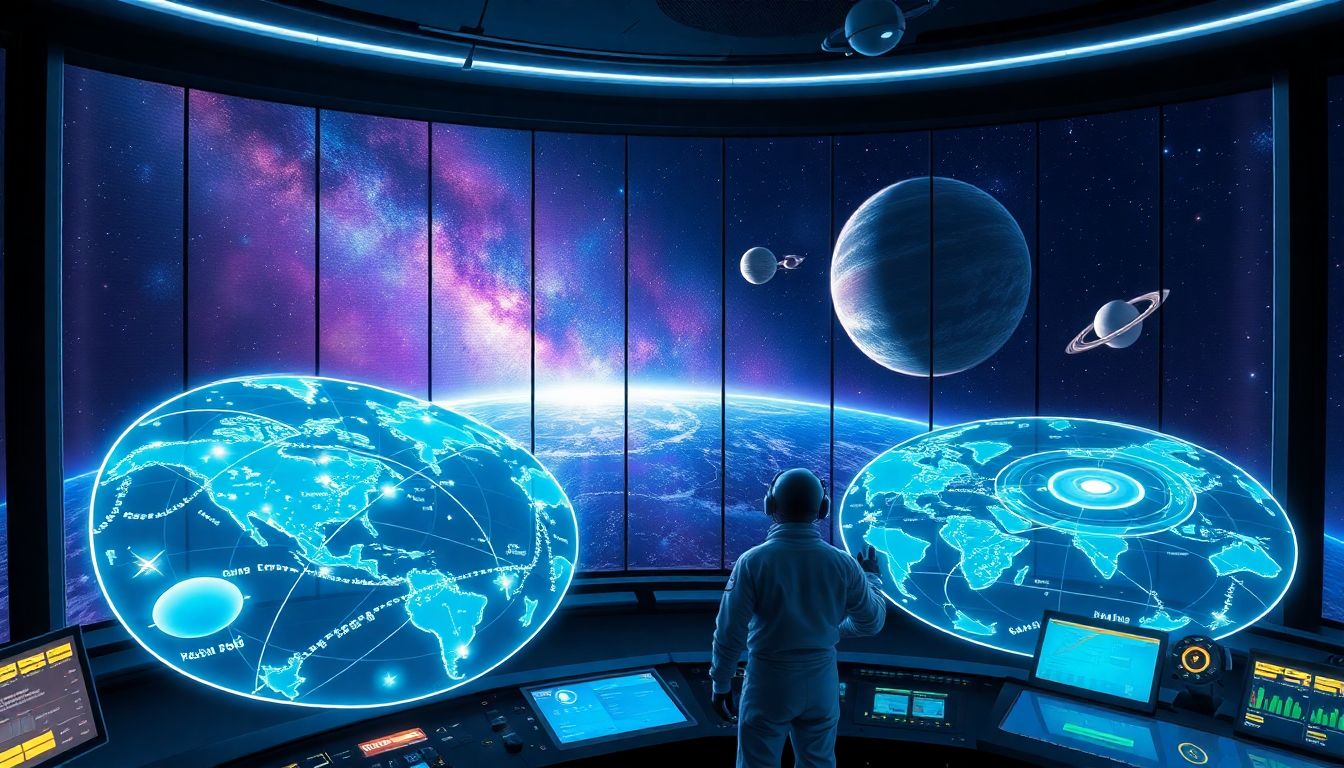What You Need to Know About Outer Space Maps in 2025

Outer space mapping has taken huge steps forward in the past few years. With space agencies, private companies, and researchers all working on new ways to explore the universe, the maps of space are getting more detailed and accurate. In 2025, understanding these space maps is crucial for science, navigation, and even business ventures. If you’re curious about how space cartography is shaping the future, this guide is for you.
The Evolution of Outer Space Mapping Technology
From Traditional Maps to Digital Space Cartography
Long ago, maps of space were basic sketches based on limited data. They showed planets, stars, and some constellations but lacked precision. These maps served their purpose but couldn’t reveal the fine details scientists needed today. As technology advanced, maps moved from paper to digital formats. Now, they rely heavily on satellite data and computer models.
The Role of Satellite Technology and AI
Satellites like the Hubble Space Telescope gave us clearer views of distant objects. Upcoming telescopes, such as the James Webb Space Telescope, can see even further. These tools gather vast amounts of data used to create detailed maps of planets, stars, and other celestial bodies. Artificial intelligence helps analyze this data faster and more accurately, making it easier to spot new features or anomalies.
Current Challenges in Space Mapping
Mapping space isn’t easy. The distances are massive, and cosmic radiation can interfere with sensors. Data collection is limited by technology and funding. But researchers are tackling these problems with better sensors, international cooperation, and smarter algorithms. Combining efforts from different countries makes the task more possible.
Key Players and Innovations in Outer Space Mapping (2025)
Leading Space Agencies and Organizations
NASA, ESA (European Space Agency), and private firms like SpaceX and Blue Origin lead in space mapping efforts. Projects such as the James Webb Space Telescope are laying new groundwork for space exploration. International teams are also working together to share data and improve maps.
Cutting-Edge Mapping Tools and Technologies
Advanced tools are changing the game. LIDAR, hyperspectral imaging, and 3D mapping give us a richer view of space. Future tech includes quantum sensors and autonomous drones that can explore tricky spots without human help. These innovations make our maps more detailed and reliable.
Innovative Projects and Collaborations
Countries and companies now team up on mapping the Moon and Mars. Public-private partnerships open up space data for scientists and hobbyists alike. Open-source platforms allow anyone to access and contribute to space maps, increasing collaboration and discovery.
How Outer Space Maps Are Transforming Various Sectors
Scientific Research and Exploration
Maps help scientists understand planets, galaxies, and asteroids better. This knowledge can help plan future colonies or resource extraction. NASA’s Mars surface maps, for example, guide rover missions and prepare for human landings.
Space Navigation and Satellite Deployment
Precise maps improve navigation for spacecraft. This reduces fuel use and increases safety. They also assist in tracking space debris and dangerous asteroids, helping prevent accidents far from Earth.
Commercial and Private Sector Uses
The rise of space tourism and commercial mining depends on accurate maps. These tools help find resource-rich asteroids and safe spots for landing. Companies can then develop sites for tourism or resource extraction, making space more accessible.
Future Trends and Predictions for Space Mapping in 2025 and Beyond
Integration of Real-Time Data and Autonomous Systems
Maps will soon update in real-time. New spacecraft may fly around continuously, collecting fresh data to keep maps current. This means no more relying on outdated information.
Expanding Accessibility and Data Sharing
Open data platforms will grow, letting more people access space maps. Researchers, students, and entrepreneurs will all join in. Sharing data worldwide makes space exploration more open and innovative.
Ethical and Legal Considerations
As space maps become more detailed, questions about who owns and controls this data will rise. International rules and treaties will shape what’s allowed. Protecting space assets and respecting national interests will be key.
Conclusion
Outer space maps are more than just pictures of distant planets. They help scientists explore, improve navigation, and open up new business opportunities. In 2025, better tech, international teamwork, and open data are transforming how we see the universe. Keeping an eye on these trends can help enthusiasts, researchers, and investors stay ahead. Now’s the time to get involved and see what the future holds in space mapping.
Let the stars guide your next move!

